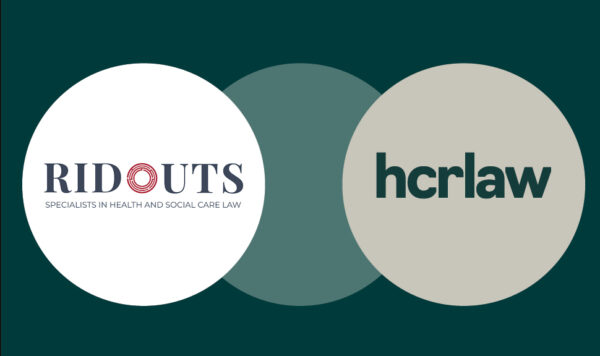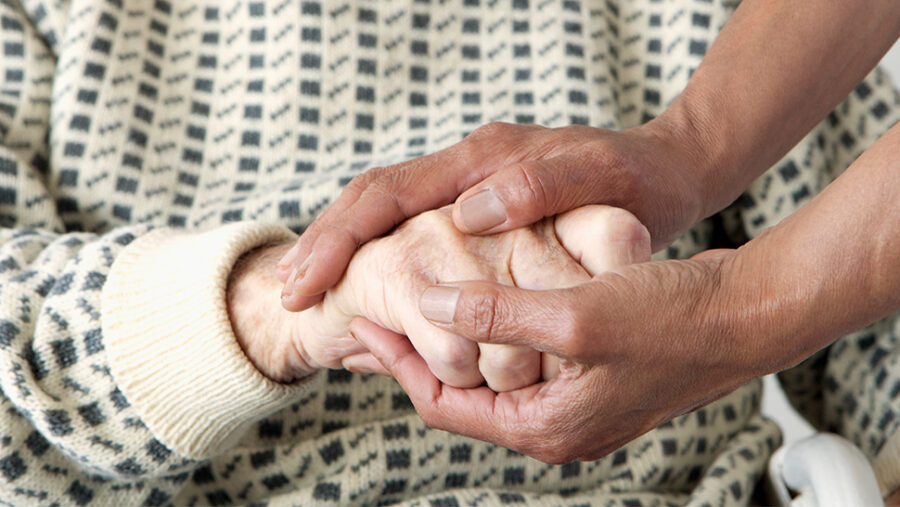

In the health and social care sector, there are invariably times when businesses interact with vulnerable individuals of one kind or another. Though these may be limited, you have the capability to make a positive difference to that individual’s experience in your care, and beyond.
What is vulnerability?
Although being ‘vulnerable’ can mean different things to different people, an individual may be considered to be vulnerable if they are less able to look after themselves or to protect themselves from harm.
Vulnerability can be caused by a variety of different factors. For example, a person could be temporarily vulnerable following a bereavement or job loss, but in other cases, a person’s age, mental or physical health could cause them to be vulnerable.
While some factors causing vulnerability may be visible, it is not always easy to spot cases where clients may have mental health issues, brain injuries or dementia, for example. Having a better awareness and looking out for signs of vulnerability could make all the difference to a vulnerable person in need of help and support more generally.
Case study: Mrs M
Mrs M was well-educated and a teacher before she retired early in her 50s.
She lived alone with her dog and two cats in a large house following separation from her husband. She lived independently, unsupported and with no immediate family members to check in on her.
One day, Mrs M attended her local vets with some medication. She appeared confused and had gone to the vets to ask whether the medication she had been taking was for her or the dog. The veterinary staff were rightly concerned about her wellbeing and raised a safeguarding referral with the local authority.
The local authority found that Mrs M had a complex form of mixed dementia which impacted her cognition and severely impacted her communication, speech and language skills. Despite this, she had been living alone with this condition for an unknown period of time. The local authority ultimately found that Mrs M had not been living well or looking after herself or her animals at home, and she was at risk of self-neglect.
Without the referral, Mrs M would have continued to put herself at risk of harm as she was not on the radar for social services. The safeguarding referral allowed Mrs M to be properly assessed by social services and to obtain the care and support she needed to live safely.
Spotting the signs
It is important to note that a balance must be struck between spotting potential warning signs to prompt a safeguarding concern and ensuring that individuals are not treated differently simply because of how they look, their behaviour or their age.
While not exhaustive, these are some of the behaviours which may indicate concern should be given about a person’s vulnerability and wellbeing:
Appearance
- Are they bruised?
- Do they look unwell or unclean?
- How are they dressed – is it appropriate for the weather? Are they at risk of incidentally exposing themselves
Behaviour
- Is the individual’s behaviour appropriate to the situation? Does it fit the circumstances?
- Are they acting unusual or sheepish in the presence of a particular person?
Cognition
- Are there any signs of confusion or disorientation?
- Do they know who they are and where they are?
- Do they know what day it is?
Communication
- Are there any obvious communication difficulties?
- Do their responses make sense for the questions asked?
- Are they struggling to find the right words to answer questions?
Changes
You may notice a change in behaviour or appearance which causes concern if you have clients whom you see regularly.
What can I do about safeguarding?
If you provide health and social care, you may well be the only person the individual sees that week.
If you suspect someone may be putting themselves at risk of harm, or if you have concerns that they could be the victim of abuse – be it physical, financial, emotional or sexual – you can make a difference.
If you have serious concern that a person is in imminent danger of being harmed or abused, you can contact the police. In other cases, a safeguarding referral can be made to your local authority anonymously by phone or using an online form.
Of course, not all vulnerabilities will require local authority involvement or support. Sometimes, just handling an enquiry with patience, sensitivity and empathy can go a long way. You should consider having procedures in place to deal with these issues to ensure vulnerable individuals living in the community can feel supported when accessing your services.
It is also a good idea to put training in place for your staff so they can spot the sings and raise any concerns if they need to.










